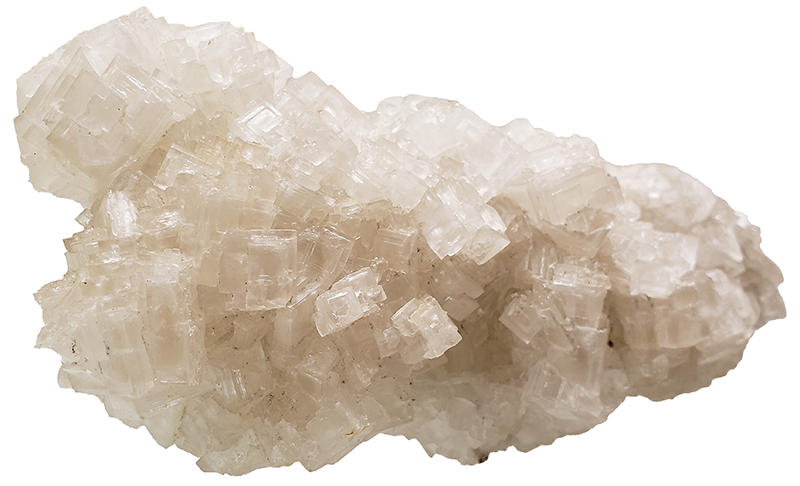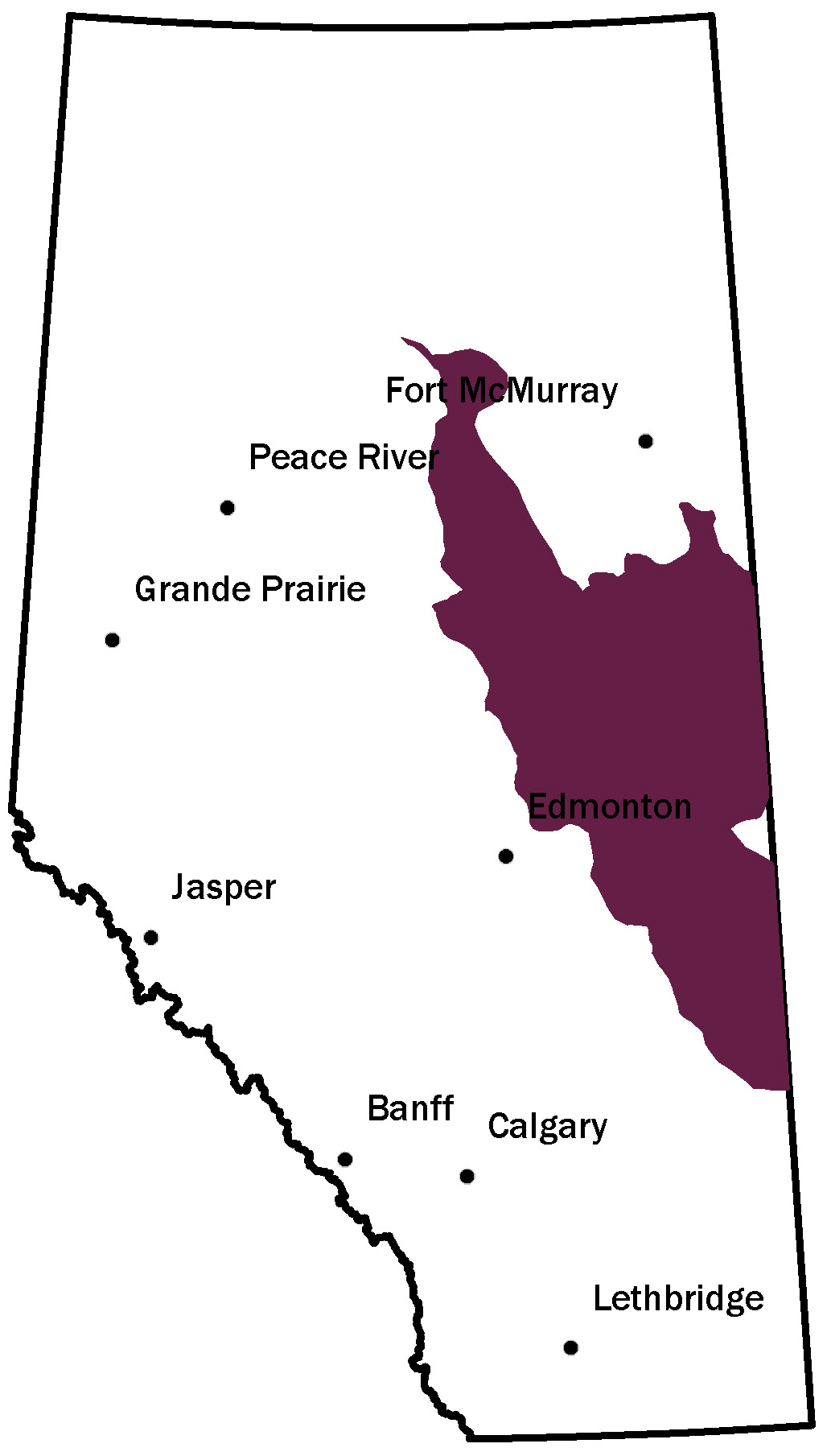![]()
Salt core with dark-coloured impurities from Fort Saskatchewan, Alberta. Core is 15 cm in diameter.

Large mass of salt crystals from Fort Smith Settlement, Alberta. Specimen is about 13 cm across.
Composition
Although there are other mineral salts that we use in our daily lives, such as calcium chloride and potassium chloride, this section is about sodium chloride, also known as the mineral halite, or rock salt.
Age and Formation
Salt crystallizes in saturated solutions in oceans, lagoons, lakes, and other isolated bodies of water to form thick beds that may be preserved in the rock record. Salt may also be derived from brines in groundwater aquifers. Rock salt can be mined directly, or produced by evaporating salt-rich solutions from oceans and lakes or underground brines. In Alberta, salt comes from dissolving 383 - 408 million year old salt from the Elk Point Group to produce brines that are pumped to the surface.
Important properties
Salt lowers the freezing point of water. In animals, salt is critical for proper cell functioning and the regulation of blood pressure and pH. Sodium chloride can be broken down to produce sodium-compounds, chlorine compounds, metallic sodium, and elemental chlorine. Salt limits, or prevents decomposition, is a coagulant, a dehydrant, and has a pleasant taste.
Uses
The physical and chemical properties of salt are valued by a wide range industries including oil and gas, concrete making, tanning and textiles, pulp and paper, rubber, and metal processing. Most salt is processed into chemicals containing sodium and chlorine, for example, elemental chlorine, metallic sodium, sodium hydroxide (caustic soda and lye), and ammonium chloride. Salt is in medications and medical solutions, detergents, soaps, and water softeners. Salt is necessary for safe food processing and preservation, and is a common seasoning in homes and restaurants. Salt melts ice on roads and sidewalks making these surfaces safer for drivers and pedestrians. Alberta is the second largest producer of salt in Canada. Saskatchewan produces the most salt in the country.
It’s a Fact!
Salt has been commercially produced near Lindbergh, Alberta since 1948.
Discover!
UAlberta Researchers Testing Door Handles Made of Salt to Limit the Spread of COVID-19
Salt Plains in Wood Buffalo National Park, Alberta
“Traditional Methods of Canning and Preserving: Recipes and Tips from Alberta’s First Nations”
Where to find salt
